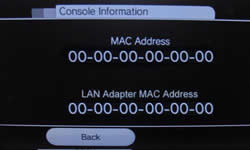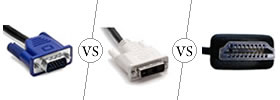Difference between MAC and IP Address
Key difference: A Media Access Control address (MAC address) is a unique identifier assigned to a network interface card (NIC) by its manufacturer. The network interface card is used to connect to the Ethernet network. Each NIC has its own unique MAC address. The MAC addresses are assigned permanently to adapters and cannot be changed as they are a unique identification of the hardware interface of network. The IP address is a number that is assigned to each device, such as a computer, a printer, etc. It describes where on the Internet your computer is located. An IP address is required by any device that participates in a computer network that uses the Internet Protocol for communication. The IP address has two main purposes: host or network interface identification and location addressing.
 A Media Access Control address (MAC address) is a unique identifier assigned to a network interface card (NIC) by its manufacturer. The network interface card is used to connect to the Ethernet network. Each NIC has its own unique MAC address. It can be said that the MAC address works as a serial number as each MAC addresses corresponds to a specific NIC. MAC addresses are used for numerous network technologies and most IEEE 802 network technologies, including Ethernet.
A Media Access Control address (MAC address) is a unique identifier assigned to a network interface card (NIC) by its manufacturer. The network interface card is used to connect to the Ethernet network. Each NIC has its own unique MAC address. It can be said that the MAC address works as a serial number as each MAC addresses corresponds to a specific NIC. MAC addresses are used for numerous network technologies and most IEEE 802 network technologies, including Ethernet.
The MAC addresses are stored in the NIC’s hardware, its read-only memory, or some other firmware mechanism. The address encodes the manufacturer's registered identification number. A MAC address can also be referred to as the burned-in address, Ethernet hardware address (EHA), hardware address or physical address.
The MAC addresses are formed and assigned according to the rules of one of three numbering name spaces managed by the Institute of Electrical and Electronics Engineers (IEEE): MAC-48, EUI-48, and EUI-64. The first half of the MAC address tells what brand/model the card is, and the second half is a unique identifier specific to that card.
The MAC addresses are assigned permanently to adapters and cannot be changed as they are a unique identification of the hardware interface of network. They are the Physical addresses. IP addresses, on the other hand, give a unique identification to the software interface of the Network. Depending on their type, static or dynamic, they can be modified depending on requirements.
According to Dictionary.com, internet protocol (IP) is “a code used to label packets of data sent across the internet, identifying both the sending and the receiving computers.” It is the principal communications protocol that is used to pass data in the form of network packets across the internet to other users. It is the primary protocol that establishes the Internet.
The IP was the connectionless datagram service in the original Transmission Control Program, which was introduced by Vint Cerf and Bob Kahn in 1974. The other type of connectionless datagram service was the connection-oriented Transmission Control Protocol (TCP). Hence, the Internet Protocol Suite is often referred to as TCP/IP. Currently, the most commonly used version of IP is the Internet Protocol Version 4 (IPv4). However, its newer version, Internet Protocol Version 6 (IPv6) is increasing in use.

In order to transfer data from one location to another, it must first know where the users are located. IP distinguishes these as IP addresses. The IP address is a number that is assigned to each device, such as a computer, a printer, etc. It describes where on the Internet your computer is located. An IP address is required by any device that participates in a computer network that uses the Internet Protocol for communication. The IP address has two main purposes: host or network interface identification and location addressing.
There are two types of IP addresses: static and dynamic. Static IP addresses are permanent. They are manually assigned to the computer by the Administrator. The Dynamic IP addresses are automatically assigned to the computer. This happens each time that the computer is boosted by the computer interface, host software or by a server. The server will probably be using DHCP (Dynamic Host Configuration Protocol) or Point-to-Point Protocol, which as technologies used to assign the Dynamic IP address.
Image Courtesy: brown.edu, hamzayaqoob.blogspot.in









Comments
Prasanta shit
Tue, 11/21/2017 - 10:26
M Tanzil
Fri, 11/17/2017 - 00:11
raghavan
Sat, 07/08/2017 - 23:56
Pallavi
Wed, 03/22/2017 - 12:30
Thanks bt the explanation wasn't xo mch well
gadz
Sat, 06/20/2015 - 15:27
nice explanation. to the point
sree
Tue, 03/03/2015 - 21:04
Good explaination-thanks alot
Umar Sakwaya
Tue, 12/23/2014 - 12:44
good explanation thank you
harith
Wed, 12/03/2014 - 09:16
Thankyou very much good explanation, i understand well... Thankyou..
shabeeb
Thu, 09/04/2014 - 19:44
Didnt find better explanation than this. Thanks a lot.
kanika
Thu, 08/28/2014 - 10:03
Pages
Add new comment